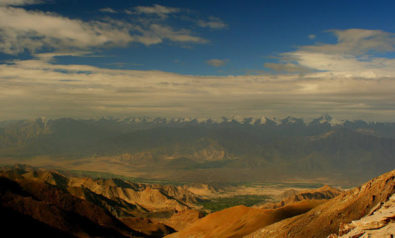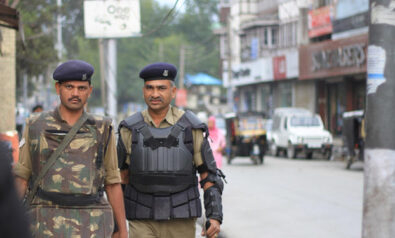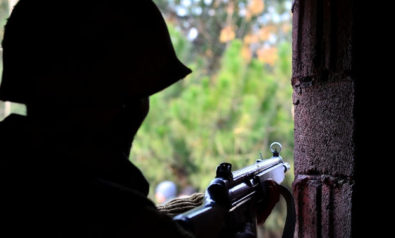
Background
A frozen inhospitable glacial wasteland in the Himalaya’s eastern Karakoram Range, Siachen is better known as the highest and coldest battlefield in the world. At nearly 20,000 feet above the sea level, the 70-km long glacier lies at the heart of a fierce territorial conquest between India and Pakistan, both of whom have continued to deploy thousands of troops in the icy terrain since 1984. Bordering China to its northeast, the glacier is critically wedged between the divided landmass of Kashmir – a region whose sovereignty has blazed four wars between the two nuclear neighbours and still remains a burning issue even after 60 years since their partition.
Defence experts often refer to Siachen as a ‘cartographic conflict’ alluding to the inadequate and imprecise delineation of territory between India and Pakistan at the time of their independence from British colonial rule in 1947. After their first war in 1949 over Kashmir, New Delhi and Islamabad agreed on a cease-fire line, commonly known as the Line of Control or LoC, by demarcating their respective positions on the map up to a reference point NJ9842, beyond which the border extended “thence north to the glaciers.” Neither country maintained any presence in the region nor laid claim to it.
However, successive expedition permissions in the region granted by Pakistan to western mountaineers in the 1970s and early 80s soon morphed into oropolitics. The expedition maps, erroneously designed by the US Defence Mapping Agency and subsequently adopted by international atlases and cartographers, depicted Siachen as part of Pakistan – an accidental claim which in turn was reinforced by issuance of grants by Islamabad. Alarmed by this new cartographic delineation, an increasingly suspicious New Delhi began to increase its activity in the region. In 1984, India occupied the glacier heights to preempt Pakistan from doing so. The Siachen conflict has raged ever since.
Why is Siachen relevant?
Stephen Cohen, a senior fellow at the Brookings Institution, describes the Siachen standoff as akin to “a struggle of two bald men over a comb.” The conflict has come to epitomize the extent of irreconcilability between India and Pakistan, who in spite of staggering losses, both of life and lucre, on a daily basis refuse to concede their position.
In 28 years since the conflict began, both sides have collectively lost close to 10,000 men in the region, mostly to extreme harsh weather, avalanches and crevasses rather than combat. In April 2012 alone, 135 Pakistani troops and civilian staff were buried alive in an avalanche in what was the country’s single biggest loss in Siachen. Constant subzero temperatures and unforgiving climate make the standoff one of the costliest warfare in modern history. According to an estimate, India alone runs a daily cost of $500,000 to $750,000 to maintain its military bases in the glacier.
Both New Delhi and Islamabad have repeatedly asserted that Siachen not only offers strategic value but also allows them a stronger position with respect to their claims over Kashmir. A likely diplomatic or military softening on Siachen, therefore, will underminetheir position. Moreover, with each ‘heroic’ death stoking nationalistic sentiments on both sides drip by drip over the years, neither state appears willing to risk looking weak in the bitter rivalry and provoking a domestic political backlash. ?
For more than 10 years, Fair Observer has been free, fair and independent. No billionaire owns us, no advertisers control us. We are a reader-supported nonprofit. Unlike many other publications, we keep our content free for readers regardless of where they live or whether they can afford to pay. We have no paywalls and no ads.
In the post-truth era of fake news, echo chambers and filter bubbles, we publish a plurality of perspectives from around the world. Anyone can publish with us, but everyone goes through a rigorous editorial process. So, you get fact-checked, well-reasoned content instead of noise.
We publish 2,500+ voices from 90+ countries. We also conduct education and training programs on subjects ranging from digital media and journalism to writing and critical thinking. This doesn’t come cheap. Servers, editors, trainers and web developers cost money.
Please consider supporting us on a regular basis as a recurring donor or a sustaining member.
Support Fair Observer
We rely on your support for our independence, diversity and quality.
Will you support FO’s journalism?
We rely on your support for our independence, diversity and quality.






